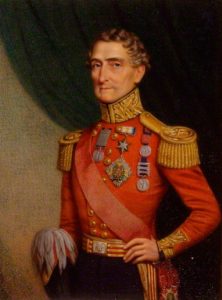 Sir Harry Smith is one of my favourite characters from the Peninsular War, up there with Lord Wellington and General Robert Craufurd. A relatively humble doctor’s son from Cambridgeshire, he rose to the heights of his profession on sheer merit and a good deal of personality, retained the friendship and admiration of the Duke of Wellington, defying the accepted belief that Wellington only favoured aristocratic and well-born officers, and married the love of his life in the shadow of the bloody siege of Badajoz. He is one of the most colourful characters of his day, and his autobiography, along with that of Kincaid, his close friend in the 95th are two of the liveliest and most readable accounts of Wellington’s campaigns. Harry Smith has a more personal significance for me, as he was the historical figure who first sparked my enthusiasm for the Peninsular War and is the inspiration, although not the model, for Colonel Paul van Daan of the 110th light infantry.
Sir Harry Smith is one of my favourite characters from the Peninsular War, up there with Lord Wellington and General Robert Craufurd. A relatively humble doctor’s son from Cambridgeshire, he rose to the heights of his profession on sheer merit and a good deal of personality, retained the friendship and admiration of the Duke of Wellington, defying the accepted belief that Wellington only favoured aristocratic and well-born officers, and married the love of his life in the shadow of the bloody siege of Badajoz. He is one of the most colourful characters of his day, and his autobiography, along with that of Kincaid, his close friend in the 95th are two of the liveliest and most readable accounts of Wellington’s campaigns. Harry Smith has a more personal significance for me, as he was the historical figure who first sparked my enthusiasm for the Peninsular War and is the inspiration, although not the model, for Colonel Paul van Daan of the 110th light infantry.
Henry George Wakelyn Smith was born in 1787, the son of a surgeon in Whittlesey, Cambridgeshire, and was commissioned into the army in 1805 and promoted to lieutenant in the 95th Rifles a few months later. He first saw active service in South America during the British invasions of 1806-07 and distinguished himself at the Battle of Montevideo.
In 1808 the young Harry Smith joined the forces under Sir John Moore invading Spain. The expedition, begun with high hopes, ended in a disastrous retreat over 200 miles of mountain paths in winter. Men, women and children died by the roadside, but Smith made it back to Corunna and the battle which left Moore dead on the field. A brief period of recovery in England restored Smith to health and his next voyage to Portugal was as part of General Robert Craufurd’s light brigade, later to become the celebrated light division. Harry Smith’s Peninsular War had begun in earnest.
Smith served with the 95th throughout the war, from 1808 to end Battle of Toulouse in 1814, and he served with considerable distinction. In 1810 he was appointed to ADC to Colonel Beckwith, with whom he clearly enjoyed an excellent relationship. In February 1812 he was promoted captain and he filled a succession of staff posts within the light division.
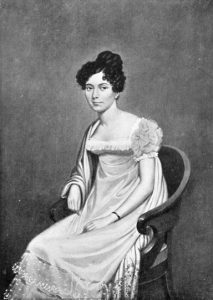 In April, Wellington’s army successfully stormed Badajoz and the army sacked the city, turning into a drunken mob whom even their own officers could not control for several days. Looting, murder and rape were committed openly and many citizens, especially women, fled from the town to take refuge at the British lines, hoping that the officers would protect them. One such lady, whose home had been destroyed, brought her younger sister with her, a girl of fourteen newly returned from a convent education. Juana Maria de Los Dolores de Leon appears to have shaken off the restrictions of her upbringing very quickly. Within a few days she was the wife of Captain Harry Smith and remained by his side for the rest of the war.
In April, Wellington’s army successfully stormed Badajoz and the army sacked the city, turning into a drunken mob whom even their own officers could not control for several days. Looting, murder and rape were committed openly and many citizens, especially women, fled from the town to take refuge at the British lines, hoping that the officers would protect them. One such lady, whose home had been destroyed, brought her younger sister with her, a girl of fourteen newly returned from a convent education. Juana Maria de Los Dolores de Leon appears to have shaken off the restrictions of her upbringing very quickly. Within a few days she was the wife of Captain Harry Smith and remained by his side for the rest of the war.
Harry Smith volunteered to serve in the United States, fighting at the Battle of Bladensburg and witnessing the burning of the capitol in Washington, an act which appalled Smith and some of the other Peninsula veterans, who compared it unfavourably to “the Duke’s humane warfare in the south of France.” He returned to Europe in time to serve as a brigade major at Waterloo and remained with the army during the occupation of France, acting as Mayor of Cambrai in Picardy. His close relationship with Wellington continued; the two men both ran hunting packs and in his autobiography, Smith describes how Wellington arranged to divide up the countryside between the two packs.
When the occupation was over, Smith returned to being divisional ADC in Glasgow for Major-General Reynell who commanded the Western District of Scotland, and it was Reynell’s recommendation that gained him his first colonial appointment as ADC to the Governor of Nova Scotia, Lieutenant-General Sir James Kempt in 1826.
Smith was promoted Major in the army by the end of 1826, but remained unattached to a regiment, and was still unattached when raised to Lieutenant-colonel in July 1830. In 1828 he was sent to the Cape of Good Hope where he commanded a force in the Sixth Xhosa War of 1834-36 and was later appointed as governor of the Province of Queen Adelaide. He was considered an energetic and talented commander who was able to restore confidence among British and Boer residents and had considerable influence over the tribes.
Smith’s attempts to modernise and introduce improvements and benefits to the Xhosa tribes were supported by the high commissioner, Sir Benjamin D’Urban, another peninsular veteran, but his policies were reversed by the ministry in London and he was removed from his command. Both Xhosa and Boers regretted his loss and some historians have suggested that his departure precipitated the Great Trek.
In 1840 Harry Smith was appointed Adjutant-General in India. He fought in the Gwalior campaign of 1843 and the first Anglo-Sikh war of 1845-6, where he was eventually given an independent command and on 28 January 1846 he inflicted a crushing defeat on the Sikhs at Aliwal on the Sutlej. For this victory he was awarded the thanks of Parliament and was the subject of an unusually long tribute from the Duke of Wellington, whose remarks concluded:
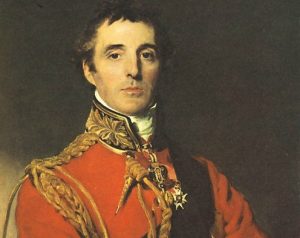 “I have read the account of many a battle, but I never read the account of one in which more ability, energy, and experience have been manifested than in this. I know of no one, in which an officer ever showed himself more capable than this officer has, in commanding troops in the field. He brought every description of troops to bear with all arms, in the position in which they were most capable of rendering service; the nicest manoeuvres were performed under the fire of the enemy with the utmost precision, and at the same time, with an energy and gallantry on the part of the troops never surpassed on any occasion whatever in any part of the world. I must say of this officer, that I never have seen any account which manifests more plainly than his does, that he is an officer capable of rendering the most important services and of ultimately being an honour to this country.”
“I have read the account of many a battle, but I never read the account of one in which more ability, energy, and experience have been manifested than in this. I know of no one, in which an officer ever showed himself more capable than this officer has, in commanding troops in the field. He brought every description of troops to bear with all arms, in the position in which they were most capable of rendering service; the nicest manoeuvres were performed under the fire of the enemy with the utmost precision, and at the same time, with an energy and gallantry on the part of the troops never surpassed on any occasion whatever in any part of the world. I must say of this officer, that I never have seen any account which manifests more plainly than his does, that he is an officer capable of rendering the most important services and of ultimately being an honour to this country.”
This is probably the greatest tribute the Duke ever bestowed on an officer. Sir Harry Smith was created a baronet and the words “of Aliwal” were appended to the title by the patent. He was promoted to major-general in November 1846.
In 1847 Smith returned to South Africa as Governor of Cape Colony and high commissioner with the local rank of lieutenant-general. The disaffection of the Boers and the local tribes had gone very much the way Smith had prophesied eleven years earlier. Smith’s first campaign was to deal with the Boers in the Orange River Sovereignty and he defeated them at Boomplaats in August 1848.
In December 1850 war broke out with the Xhosa once more and some of the Khoikhoi joined in. Smith did not have enough troops from England but he experienced some success. He has been criticised by modern historians for his conduct during this period. Smith had a tendency towards the dramatic, and some of his demonstrations towards the tribes appear appalling in a modern context, although interestingly do not seem to have been seen that way by Xhosa themselves at the time. His campaign was warmly approved by the Duke of Wellington and other military authorities but Earl Grey, in a dispatch never submitted to the queen, recalled him in 1852 before the Xhosa and Khoikhoi had been completely subdued. Smith protested strongly against the abandonment of the Orange River Sovereignty to the Boers, which happened two years after his departure, and was a firm supporter of the granting of responsible government to Cape Colony.
In 1853 Sir Harry Smith was made General Officer Commanding the Western District in England and was given brevet promotion to lieutenant-general in 1854. He was appointed to the same role in the Northern District in 1856.
Smith died at his home at Eton Place, London, on 12 October 1860. He was buried at St Mary’s, Whittlesey. His wife, Juana, who had accompanied him throughout his life on his various campaigns, died twelve years later and is buried with him. Smith’s autobiography was first published posthumously in 1901.
I first met Harry Smith, not as the enthusiastic junior officer who features as a recurring character in my peninsular war books, but as the victor over the Sikhs at Aliwal and then as a colonial general and administrator in South Africa. There was always something very appealing about Sir Harry Smith and reading between the dry lines of some of the history texts, I had a sense of a huge personality, a man with courage and ideas and a determination to make progress and to do whatever job he was sent to do, to his utmost.
This didn’t always go well. Smith’s enthusiasm as a young officer clearly recommended him to his seniors during his days with the light division and I suspect that his independent thinking worked well under commanders like Robert Craufurd and Sydney Beckwith while it might not always have gone down as well with ministers such as Lord Glenelg in later life.
The slightly surprising thing, is how well Smith seemed to get on with Lord Wellington, a commander with a reputation for disliking initiative in his officers and a man, moreover, who was reputed to prefer his officers to be young men from aristocratic families. Smith failed on both counts and yet it is very obvious that he held Wellington’s favour from the start.
My interest in the older Harry Smith caused me to read his autobiography. I already knew something of the political history of the Napoleonic Wars but my knowledge of the military aspects was restricted to a couple of Bernard Cornwell’s Sharpe books which came out at round about the same time. I read, initially one or two more contemporary accounts of the conflict and then began to read some of the standard histories of the period, old and new, and more biographies and autobiographies and I was completely hooked.
When I began to attempt writing my own historical novels, these were initially set in very different periods. The idea of a Peninsular War novel came to me several years later and I baulked at it, probably because by that stage Sharpe had arrived on our TV screens and a host of other writers were tackling the Napoleonic wars both from and army and a naval perspective. It seemed to me at the time, that the stories were being told by others and told well.
The story of Harry and Juana Smith kept coming back to me over the years, however, and I continued to read everything I could get my hands on about the period. I wanted to write, not their story exactly, but the story of another couple who took the same journey as them and lived through the same events. Gradually, over a couple of years of scribbling, Paul and Anne van Daan were born.
Paul van Daan shares Harry Smith’s talent and energy and independent spirit. I chose a different background for him. I wanted something a long way from Cornwell’s Sharpe, since it seemed to me that every novel of that period would be directly compared to those. Sharpe was from the bottom of the heap, an enlisted man scrabbling his way up to an officer’s commission. Harry Smith started higher, respectably middle class but with no money. I moved a step or two up the social scale with my hero, giving him a wealthy background but a very mixed pedigree and an early stint below decks in the Royal Navy to make him comfortable with his enlisted men. The point of Sharpe is that he struggles to fit in anywhere; I wanted a hero who could fit in everywhere. Paul’s fight is not against the army establishment it is against his own nature; quick-tempered, hot-headed and impulsive; the early books are about Paul growing up.
Anne’s background has little in common with Juana Smith although like Juana, she takes to life in the army’s tail as if she had been born there. She shares a lot of Juana’s traits; she is attractive, charming and very determined and she has the ability to get on with both officers and enlisted men. Like Juana, she is a favourite of the irascible Lord Wellington. Like Juana, she has a hard-headed practicality which enables her to cope very well with the conditions of an army on the move.
The joy of writing fiction is that it is possible to introduce one’s fictional creations to the characters who inspired them. Colonel Paul van Daan is both older and senior to the young Harry Smith and although they get on well, they also disagree spectacularly on occasion. It has been fun to go back to Smith’s early days and to tell a little of his story alongside my own and it’s good to look back and remember how my own journey through the Peninsular War began with Harry’s autobiography.
 Book five of the Peninsular War Saga, An Untrustworthy Army, is due for publication on kindle at the end of November and in paperback in December. The first four books are available on Amazon here and for a glimpse at an earlier episode in Paul van Daan’s history, try An Unwilling Alliance.
Book five of the Peninsular War Saga, An Untrustworthy Army, is due for publication on kindle at the end of November and in paperback in December. The first four books are available on Amazon here and for a glimpse at an earlier episode in Paul van Daan’s history, try An Unwilling Alliance.
 I have just got back from a great weekend at the Malvern Festival of Military History. It was a fantastic event, featuring a wide selection of historians, novelists and enthusiasts and I highly recommend it to anybody interested in the field who didn’t make it this year. I met some amazing people and have come away with some good memories and a whole host of new ideas which I am never going to have time to write. I also spent a small fortune on books…
I have just got back from a great weekend at the Malvern Festival of Military History. It was a fantastic event, featuring a wide selection of historians, novelists and enthusiasts and I highly recommend it to anybody interested in the field who didn’t make it this year. I met some amazing people and have come away with some good memories and a whole host of new ideas which I am never going to have time to write. I also spent a small fortune on books…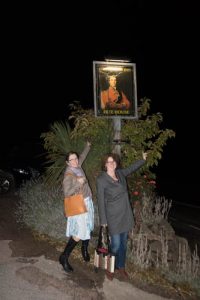
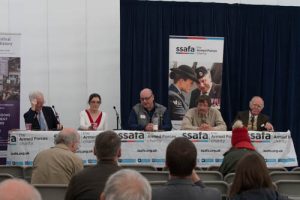

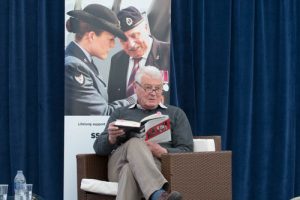

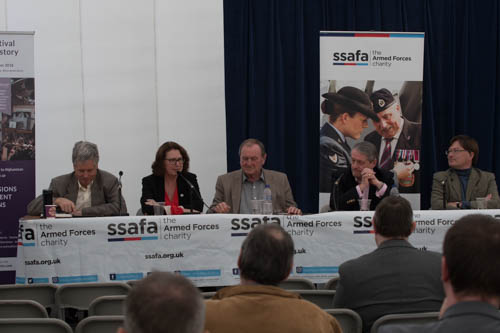
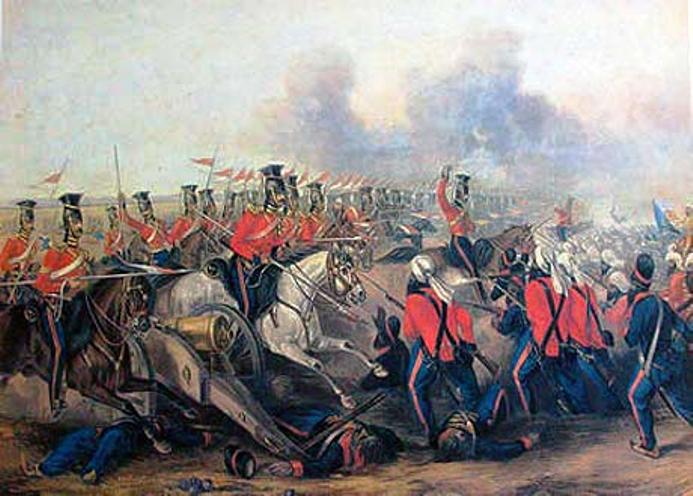

 In April, Wellington’s army successfully stormed Badajoz and the army sacked the city, turning into a drunken mob whom even their own officers could not control for several days. Looting, murder and rape were committed openly and many citizens, especially women, fled from the town to take refuge at the British lines, hoping that the officers would protect them. One such lady, whose home had been destroyed, brought her younger sister with her, a girl of fourteen newly returned from a convent education. Juana Maria de Los Dolores de Leon appears to have shaken off the restrictions of her upbringing very quickly. Within a few days she was the wife of Captain Harry Smith and remained by his side for the rest of the war.
In April, Wellington’s army successfully stormed Badajoz and the army sacked the city, turning into a drunken mob whom even their own officers could not control for several days. Looting, murder and rape were committed openly and many citizens, especially women, fled from the town to take refuge at the British lines, hoping that the officers would protect them. One such lady, whose home had been destroyed, brought her younger sister with her, a girl of fourteen newly returned from a convent education. Juana Maria de Los Dolores de Leon appears to have shaken off the restrictions of her upbringing very quickly. Within a few days she was the wife of Captain Harry Smith and remained by his side for the rest of the war. “I have read the account of many a battle, but I never read the account of one in which more ability, energy, and experience have been manifested than in this. I know of no one, in which an officer ever showed himself more capable than this officer has, in commanding troops in the field. He brought every description of troops to bear with all arms, in the position in which they were most capable of rendering service; the nicest manoeuvres were performed under the fire of the enemy with the utmost precision, and at the same time, with an energy and gallantry on the part of the troops never surpassed on any occasion whatever in any part of the world. I must say of this officer, that I never have seen any account which manifests more plainly than his does, that he is an officer capable of rendering the most important services and of ultimately being an honour to this country.”
“I have read the account of many a battle, but I never read the account of one in which more ability, energy, and experience have been manifested than in this. I know of no one, in which an officer ever showed himself more capable than this officer has, in commanding troops in the field. He brought every description of troops to bear with all arms, in the position in which they were most capable of rendering service; the nicest manoeuvres were performed under the fire of the enemy with the utmost precision, and at the same time, with an energy and gallantry on the part of the troops never surpassed on any occasion whatever in any part of the world. I must say of this officer, that I never have seen any account which manifests more plainly than his does, that he is an officer capable of rendering the most important services and of ultimately being an honour to this country.” Book five of the Peninsular War Saga, An Untrustworthy Army, is due for publication on kindle at the end of November and in paperback in December. The first four books are available on Amazon
Book five of the Peninsular War Saga, An Untrustworthy Army, is due for publication on kindle at the end of November and in paperback in December. The first four books are available on Amazon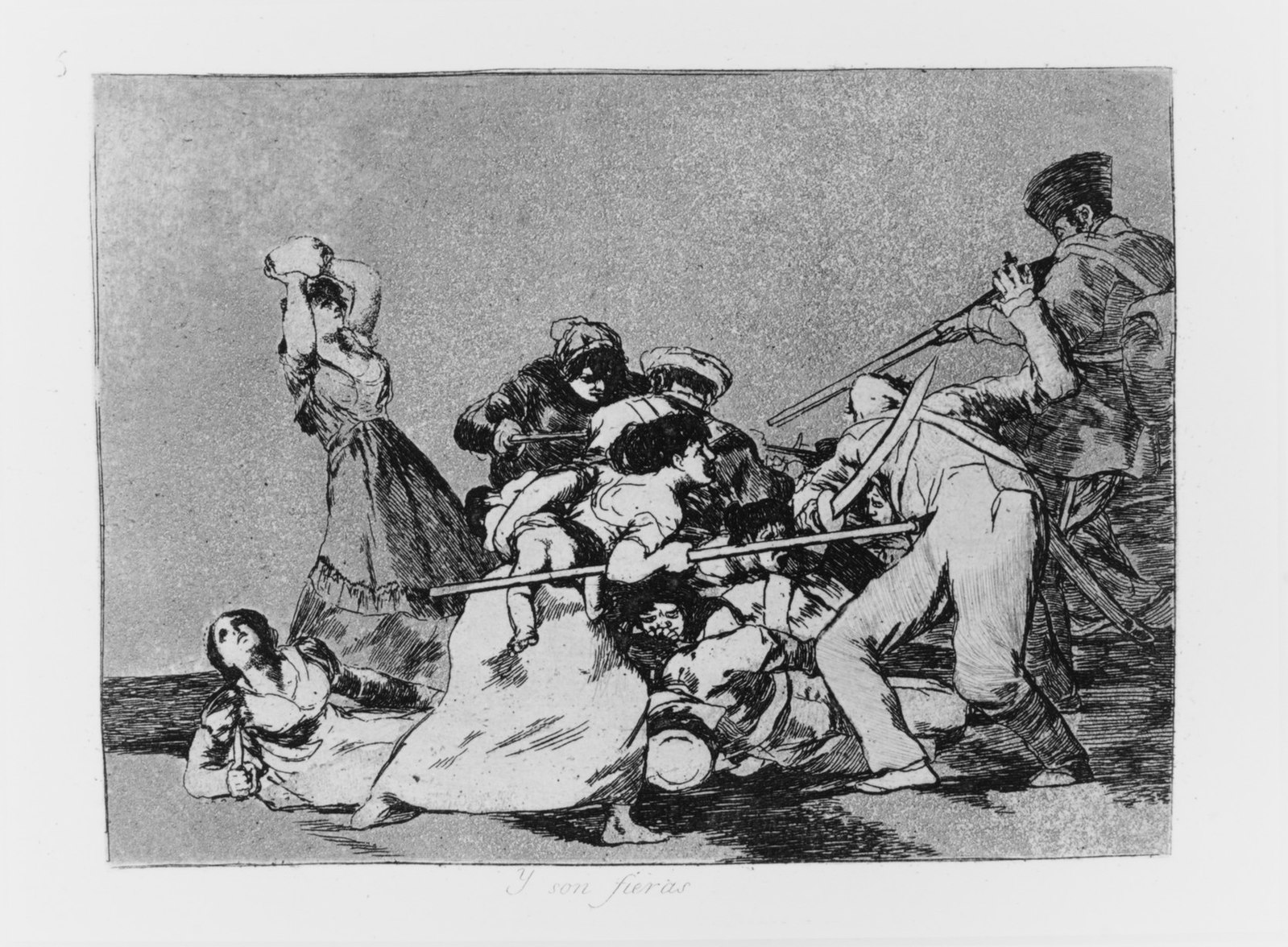
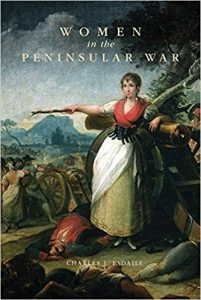 Women in the Peninsular War are a central theme of the novels I write and I have just finished reading an excellent book with that title by Professor Charles Esdaile. I have just finished reading this book properly for the first time, although I’ve dipped in and out of it for research for my novels for a while. Charles Esdaile has written an excellent account of the experiences of women of all nationalities and classes who found themselves caught up in the horror of the conflict in Portugal and Spain in the early nineteenth century.
Women in the Peninsular War are a central theme of the novels I write and I have just finished reading an excellent book with that title by Professor Charles Esdaile. I have just finished reading this book properly for the first time, although I’ve dipped in and out of it for research for my novels for a while. Charles Esdaile has written an excellent account of the experiences of women of all nationalities and classes who found themselves caught up in the horror of the conflict in Portugal and Spain in the early nineteenth century.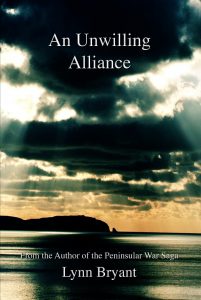 I first came across this final story when I was researching courts martial for
I first came across this final story when I was researching courts martial for 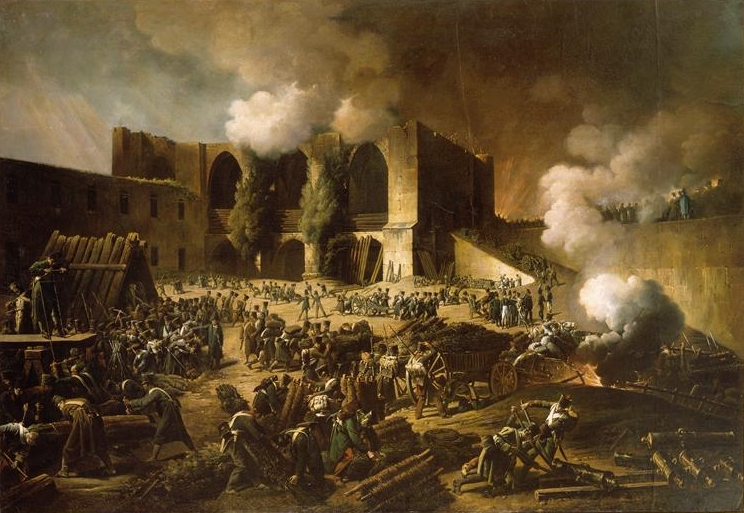
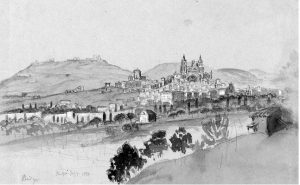
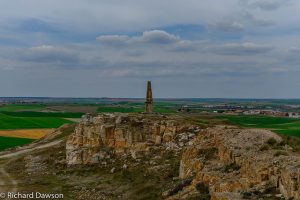
 Rory Muir, in his
Rory Muir, in his 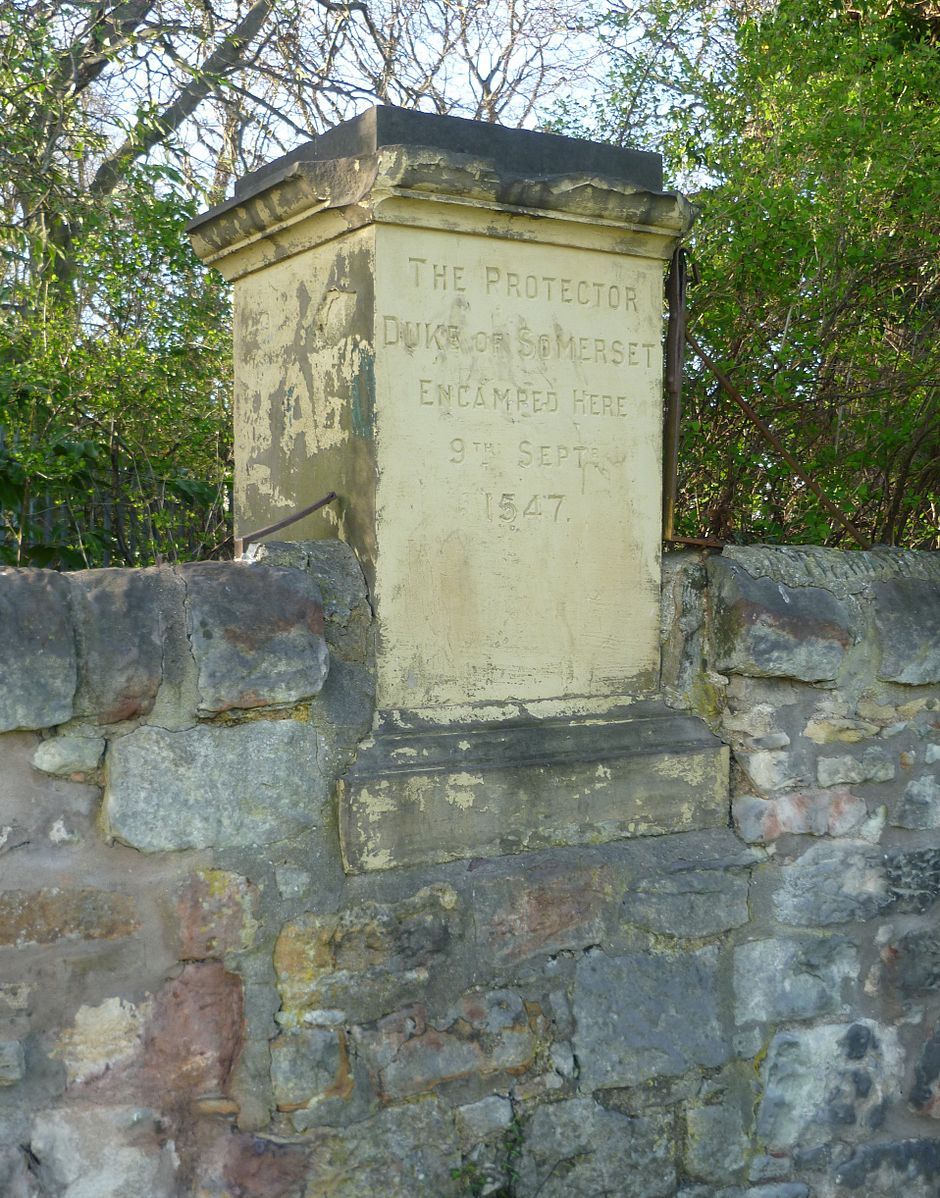
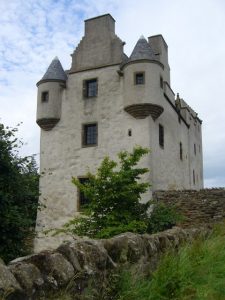
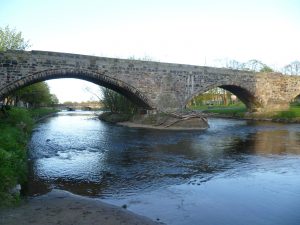

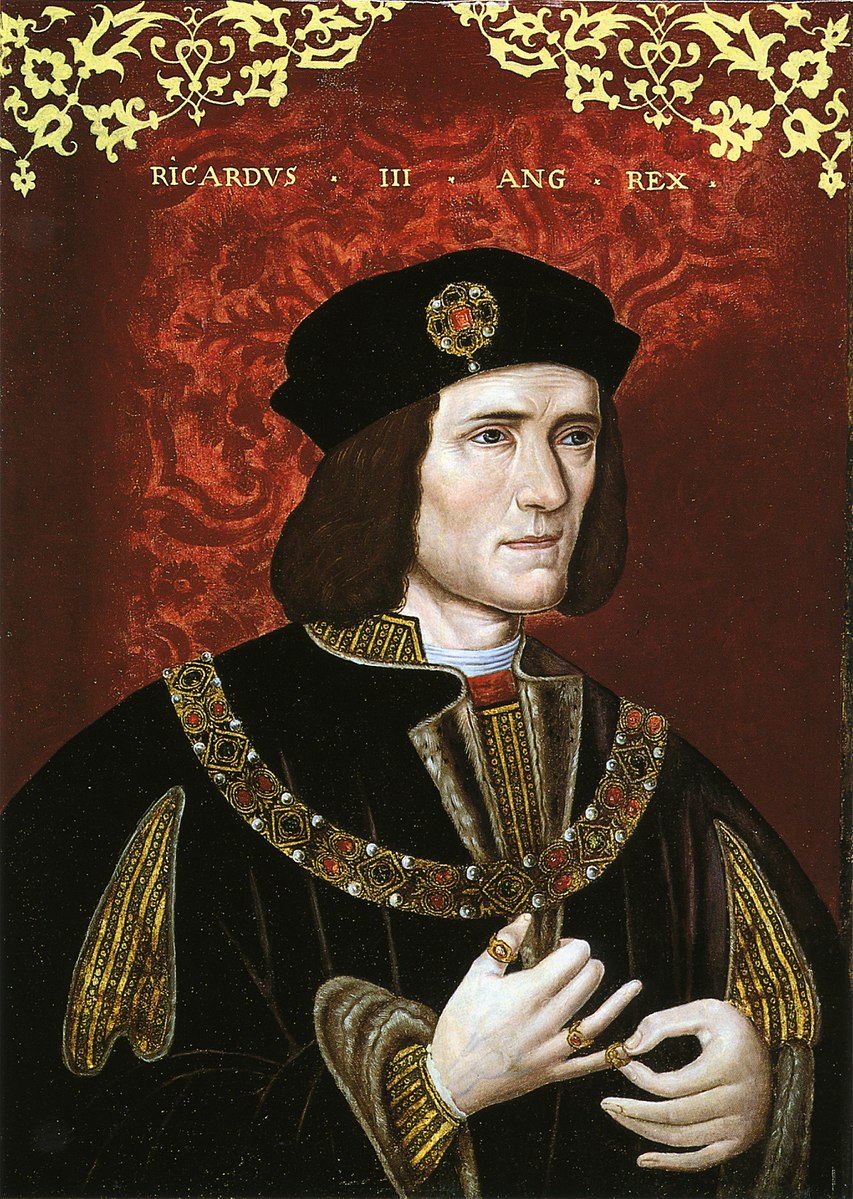
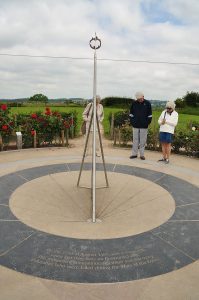 This is an appeal against the threat to the Bosworth Battlefield site. I have lifted the text directly from
This is an appeal against the threat to the Bosworth Battlefield site. I have lifted the text directly from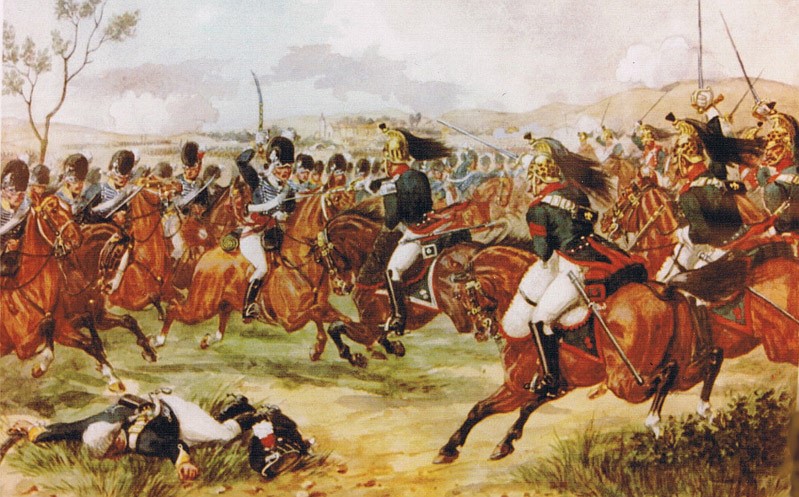
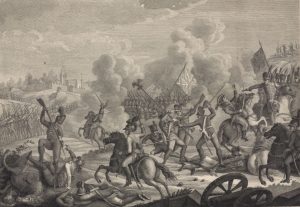 The Battle of Vimeiro took place on this day in 1808 when the British under General Sir Arthur Wellesley defeated the French under Major-General Junot near the village of Vimeiro in Portugal.
The Battle of Vimeiro took place on this day in 1808 when the British under General Sir Arthur Wellesley defeated the French under Major-General Junot near the village of Vimeiro in Portugal.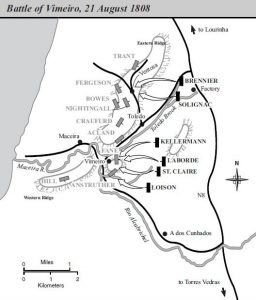 Junot’s first move was to attempt to outflank the British by taking an unoccupied ridge to the north-east of the village. Wellesley’s men held Vimeiro and the western ridge, but he moved quickly to take the ridge ahead of Junot. Junot sent reinforcements to join the battle on the flank but made the decision to launch an attack on the village without waiting to see the outcome of his outflanking manoeuvre.
Junot’s first move was to attempt to outflank the British by taking an unoccupied ridge to the north-east of the village. Wellesley’s men held Vimeiro and the western ridge, but he moved quickly to take the ridge ahead of Junot. Junot sent reinforcements to join the battle on the flank but made the decision to launch an attack on the village without waiting to see the outcome of his outflanking manoeuvre. I’m currently on a week long trip to Northern Ireland: a place of contrasts which leaves the traveller in me overwhelmed by the beauty of the landscape and the historian in me with her head spinning. After only a few days it’s clear to me how appallingly difficult it must be for any historian writing about the turbulent past of this area to find a balance between the stories of the past and the ongoing narrative of the present.
I’m currently on a week long trip to Northern Ireland: a place of contrasts which leaves the traveller in me overwhelmed by the beauty of the landscape and the historian in me with her head spinning. After only a few days it’s clear to me how appallingly difficult it must be for any historian writing about the turbulent past of this area to find a balance between the stories of the past and the ongoing narrative of the present.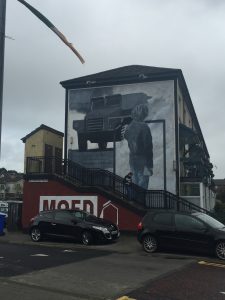 This trip has changed that for me. Spending time in Belfast and Derry, reading accounts of the confusing relationships between the English, the Scots and the Irish of all persuasions has reminded me that through the centuries this has been so much more than the simplistic explanation of conflict between Protestants and Catholics which was what I remember being told as a child, watching the violence explode across the evening news week after week through the seventies. IRA bombings were a reality of life, coming close to home on more than one occasion, and all I can remember back then was a sense of anger at feeling under threat over a cause that I did not understand and felt was none of my business.
This trip has changed that for me. Spending time in Belfast and Derry, reading accounts of the confusing relationships between the English, the Scots and the Irish of all persuasions has reminded me that through the centuries this has been so much more than the simplistic explanation of conflict between Protestants and Catholics which was what I remember being told as a child, watching the violence explode across the evening news week after week through the seventies. IRA bombings were a reality of life, coming close to home on more than one occasion, and all I can remember back then was a sense of anger at feeling under threat over a cause that I did not understand and felt was none of my business.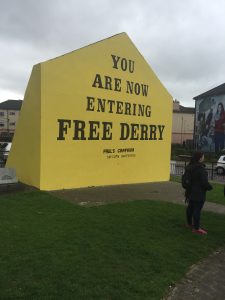 Yesterday we went for a trip to Derry / Londonderry and visited the
Yesterday we went for a trip to Derry / Londonderry and visited the 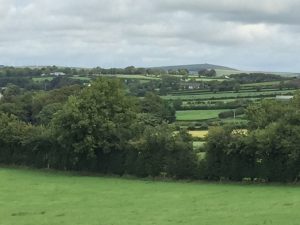 Alongside the historical complexity of this region is the stunning beauty of the scenery and that can be appreciated without needing to understand any more. Coming from the Isle of Man, I consider myself a connoisseur of fabulous coastlines and this one is definitely up there with the best. Travelling back on the Lough Foyle ferry yesterday evening into Magilligan was magical.
Alongside the historical complexity of this region is the stunning beauty of the scenery and that can be appreciated without needing to understand any more. Coming from the Isle of Man, I consider myself a connoisseur of fabulous coastlines and this one is definitely up there with the best. Travelling back on the Lough Foyle ferry yesterday evening into Magilligan was magical.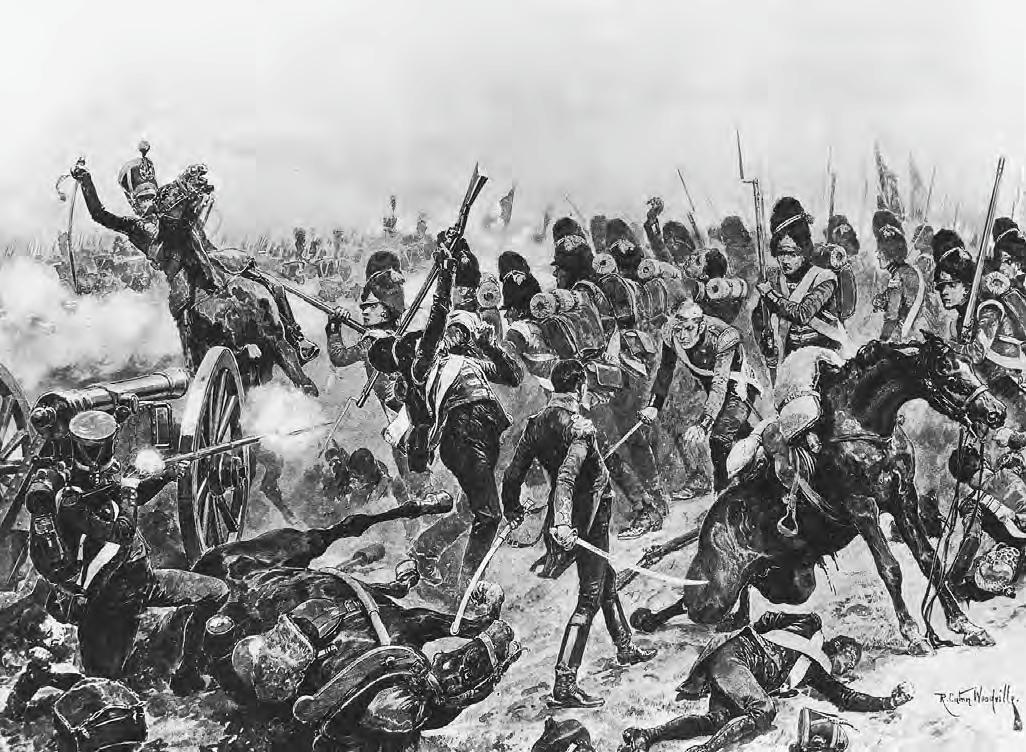
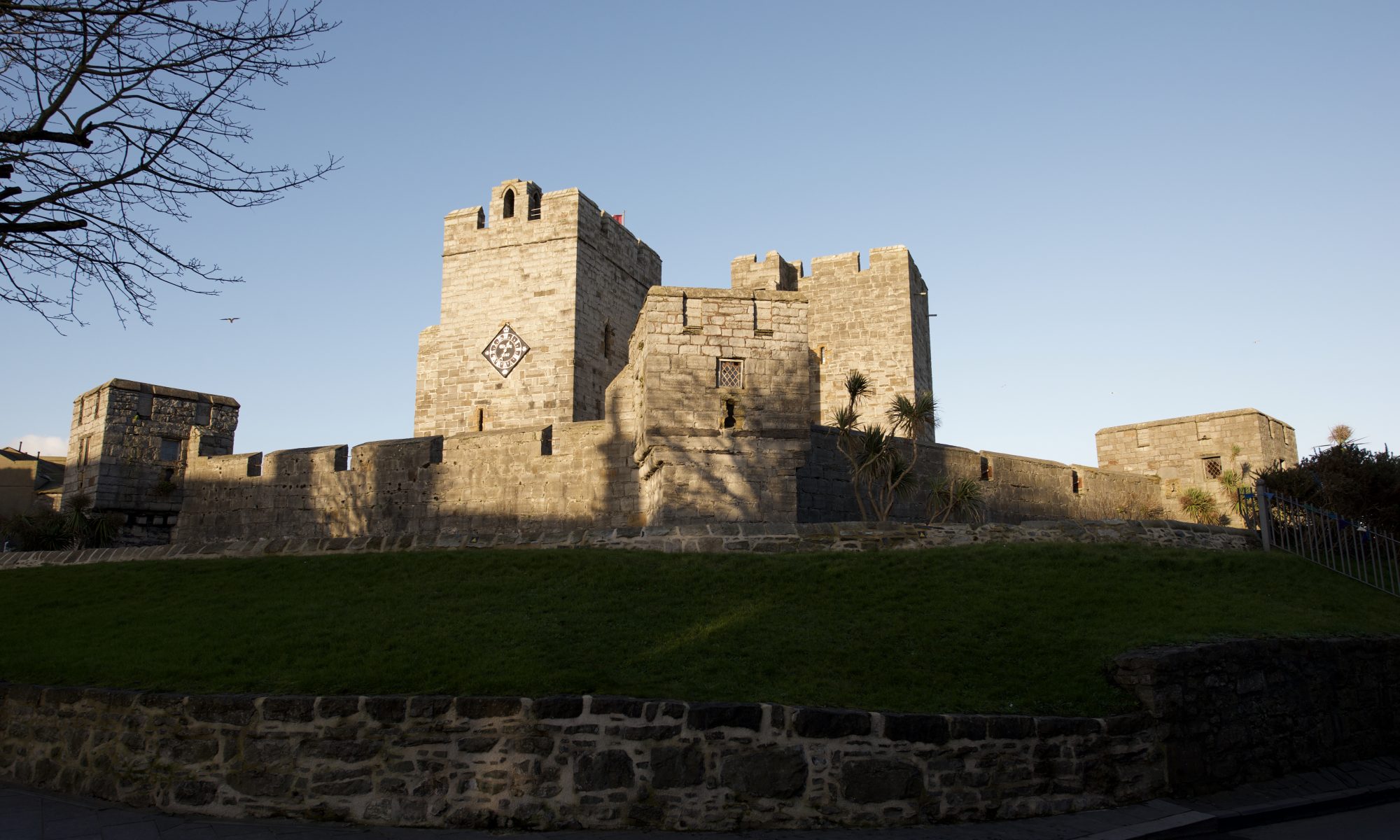
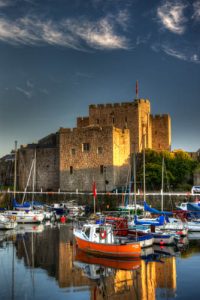
 were genuinely funny; I particularly liked the one he apparently found in an old book telling of the ghost of a black headless dog in Castletown which can only be seen by another dog. A talking dog, presumably. I must take my boys down there and they can tell me if they see anything…
were genuinely funny; I particularly liked the one he apparently found in an old book telling of the ghost of a black headless dog in Castletown which can only be seen by another dog. A talking dog, presumably. I must take my boys down there and they can tell me if they see anything…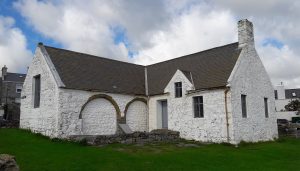 Other stories genuinely had a spooky feel about them. The ghostly woman in black seen around Castle Rushen is a very traditional ghost story but there’s a reason it’s a classic and the mysterious light coming on at night in one of the rooms of Compton House was also an odd one. I also enjoyed the haunting of the Old Grammar School; ghostly children’s voices singing in an empty building is a definite chiller.
Other stories genuinely had a spooky feel about them. The ghostly woman in black seen around Castle Rushen is a very traditional ghost story but there’s a reason it’s a classic and the mysterious light coming on at night in one of the rooms of Compton House was also an odd one. I also enjoyed the haunting of the Old Grammar School; ghostly children’s voices singing in an empty building is a definite chiller.